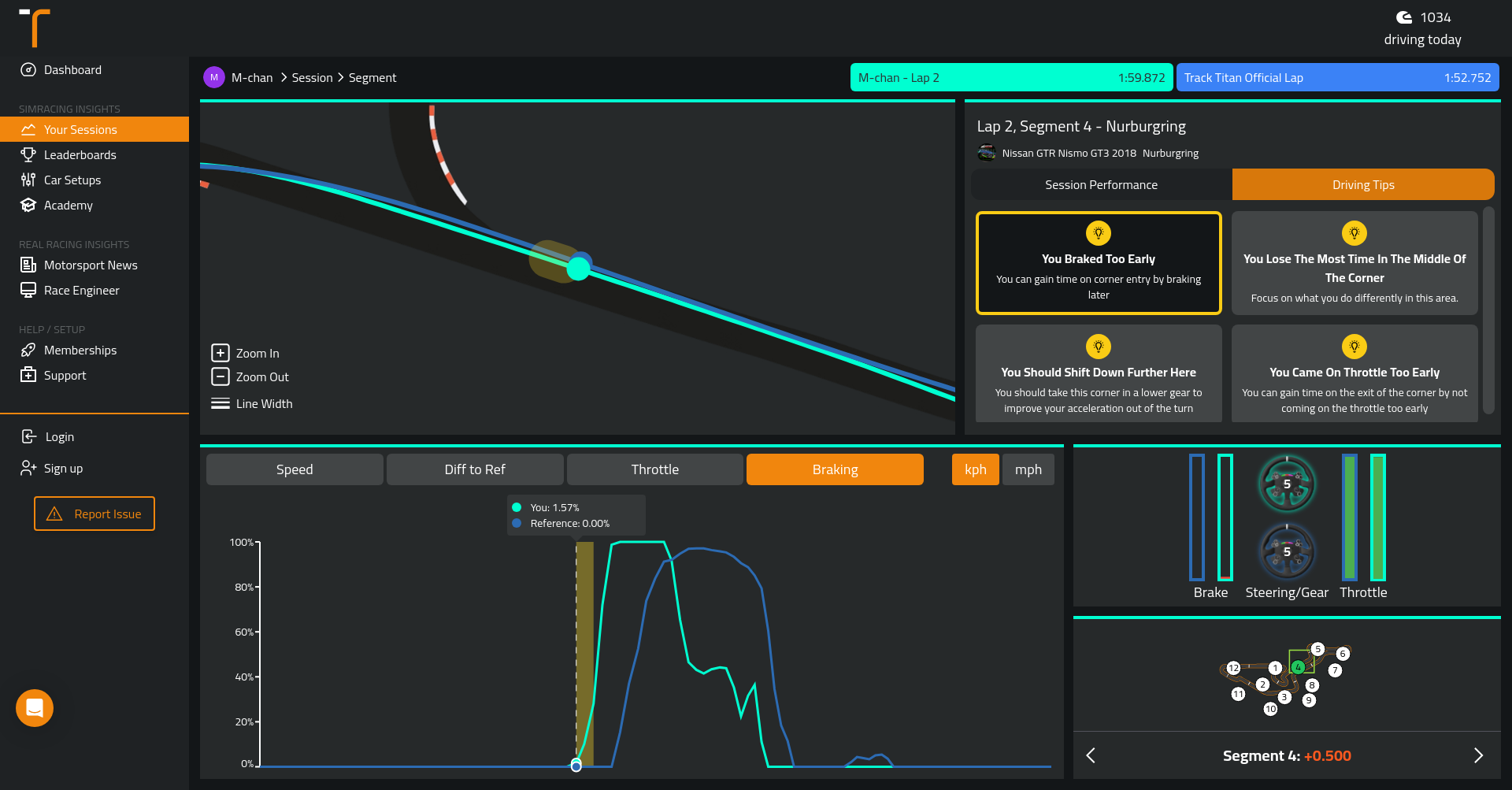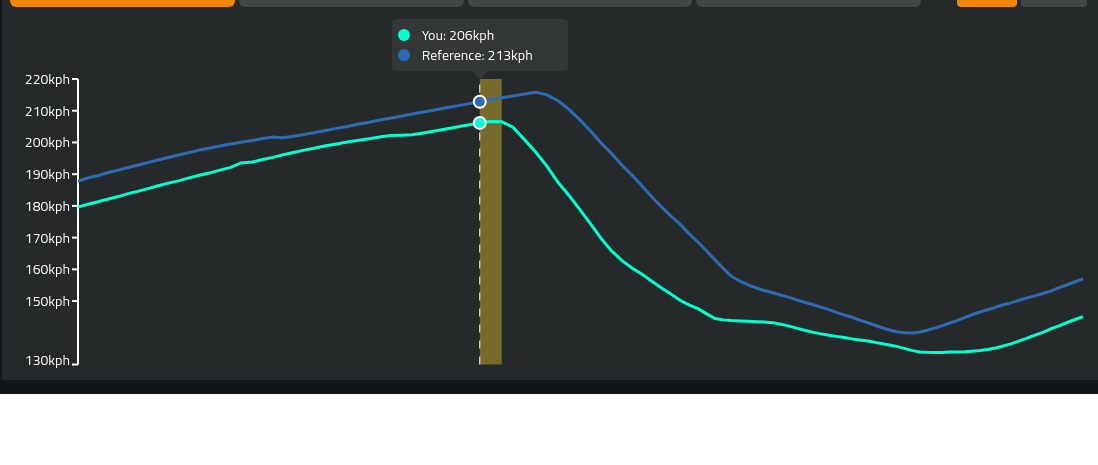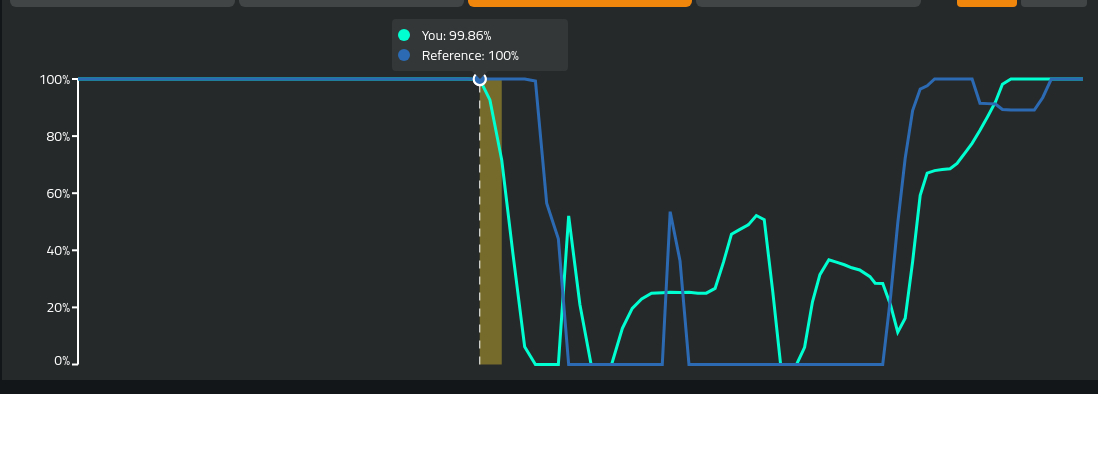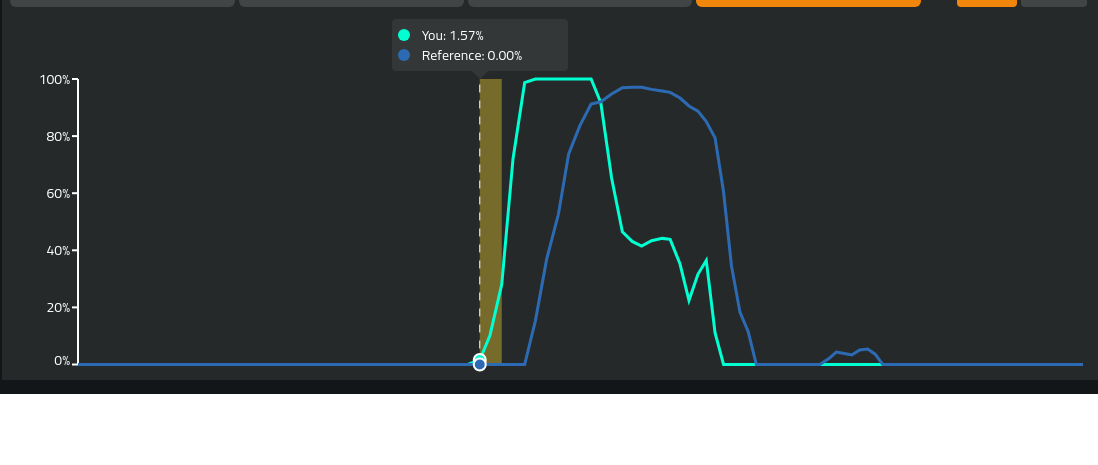Nurburgring Corner Analysis - Nissan GTR Nismo GT3 2018 (ACC)
February 9th, 2024

The speed chart analysis reveals that driverB enters the corner at a lower speed than driverA, indicating a loss of momentum from the previous turn. DriverB also shows a lower minimum speed in the corner's midsection and accelerates out later, suggesting the need to maintain higher speeds through corners and optimize throttle application for earlier acceleration. DriverA's throttle control is cautious with a slower increase, possibly due to managing wheelspin or maintaining control. DriverB applies throttle more quickly and confidently. However, driverA applies throttle too early, which can lead to slower exit speeds. It is recommended that driverA adopts driverB's later but decisive throttle input for better vehicle control and maximized acceleration. In braking analysis, driverA begins braking much earlier with a rapid increase to peak pressure, followed by a gradual release. This contrasts with driverB's later but more aggressive brake application and quicker release. DriverA may be losing time due to early braking and less decisive brake release. The advice is for driverA to delay braking initiation and engage in a more assertive brake release to improve performance and match driverB's pace.
Analyzing the speed chart, it's evident that driverB is entering the corner with a lower speed compared to driverA. This is indicated by the initial left portion of the chart where driverB's speed line starts below that of driverA. This suggests that driverB did not carry as much speed out of the previous corner, which sets them up at a disadvantage right from the beginning of this section. Furthermore, in the middle of the corner, there is a significant difference in minimum speeds between both drivers. DriverB's minimum speed dips lower and occurs later than that of driverA, indicating a delayed throttle application. This results in driverB accelerating out of the turn later than driverA, as shown by the flatter gradient of their speed line post-minimum speed point. To improve performance, driverB should focus on maintaining higher minimum corner speeds and optimizing their throttle application to ensure earlier acceleration out of turns.

In the provided throttle control analysis, driverA exhibits a significantly different approach compared to driverB. DriverA's throttle application is less aggressive and shows a slower increase in intensity. This suggests a cautious acceleration pattern, potentially due to difficulty managing wheelspin or an attempt to maintain control of the vehicle. In contrast, driverB applies the throttle more rapidly and reaches full application sooner, indicating confidence in vehicle handling and traction. The timing of throttle application is also critical. DriverA comes on the throttle notably earlier than driverB, which correlates with the advice against early throttle application. This premature action can lead to underutilization of available grip and ultimately slower exit speeds. For improved performance, driverA should emulate driverB's later but more decisive throttle input, which would aid in maximizing acceleration out of the corner while maintaining better control over the vehicle dynamics.

Analyzing the brake control chart, it's evident that driverA initiates braking significantly earlier than driverB. This early braking is characterized by a rapid increase in brake application, reaching a peak that is sustained briefly before tapering off. In contrast, driverB applies the brakes later and with a sharper increase to maximum pressure, indicating a more aggressive approach to the braking zone. Furthermore, driverA's brake release is more gradual compared to driverB's quicker reduction in brake pressure. This suggests that driverA may be engaging in trail braking but is potentially losing time due to the early onset of braking and less decisive brake release. To improve performance, driverA should focus on delaying the initial brake application and adopting a more assertive release of the brakes to match the reference pace set by driverB.
